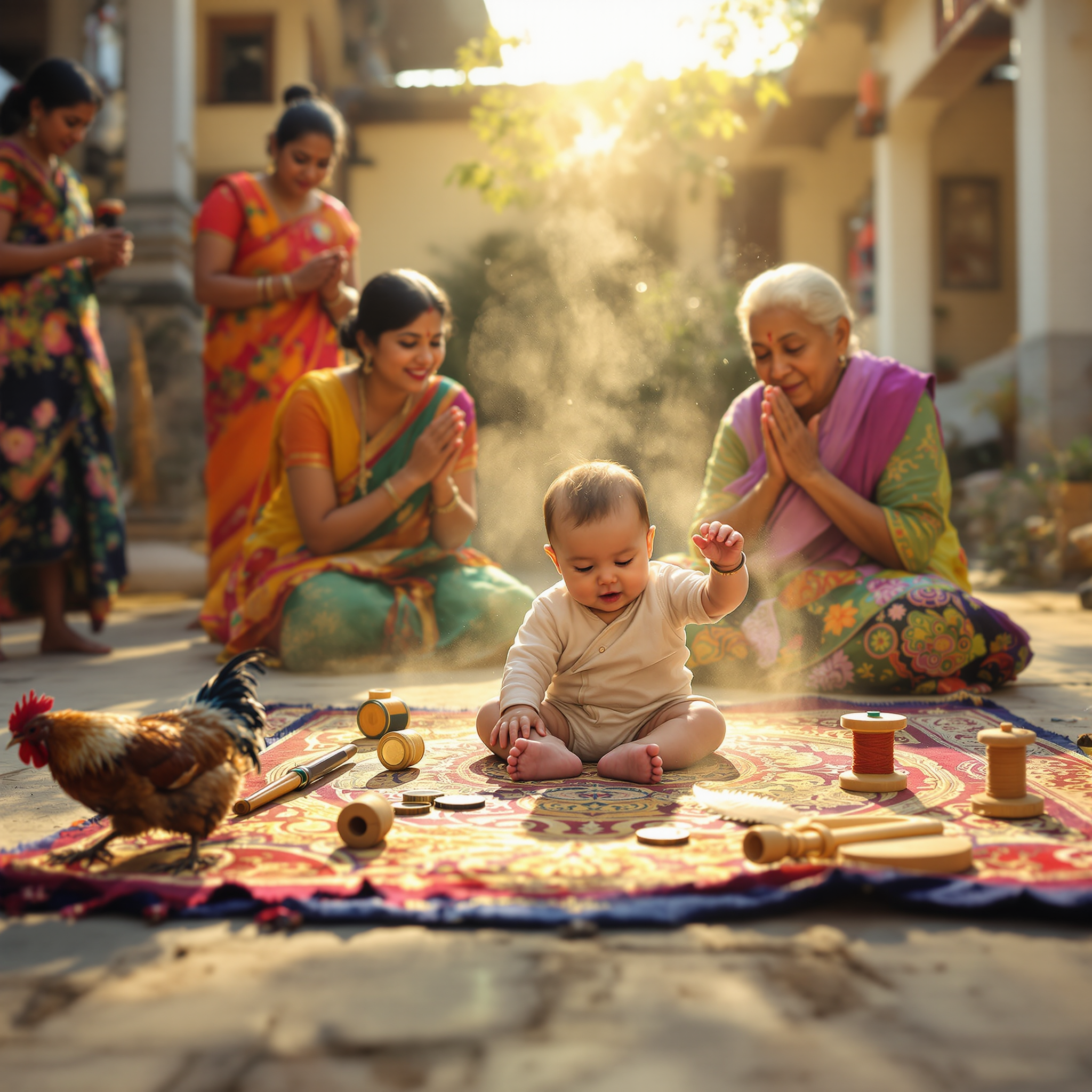In several Asian and Eastern European cultures, a traditional ceremony is held for babies usually around their first birthday. Known as Zhuazhou in Chinese culture or Doljabi in Korean, the ritual involves placing multiple symbolic items in front of the child—such as coins (wealth), a book (scholarship), a stethoscope (medical career), or food-related items. Whichever object the child picks up first is believed to foretell their future occupation or personality. This non-religious ceremony is often festive, accompanied by food, family gatherings, and sometimes elaborate decorations. Though symbolic, families use this event to celebrate the child’s growth and future potential.

Construction or renovations in a pregnant woman’s home are believed to endanger the unborn child’s health and well-being.
This superstition advises that no form of construction, renovation, or physical modifications should take place within a household where a


